
Nebraska: The Call of Free Land and Open Space
By Cathie Arquilla
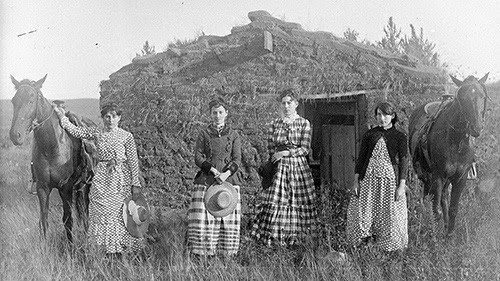
What you did not need to apply for the Homestead Act of 1863:
- to be male
- to be married
- to be white
- to be American
The photo of the Chrisman sisters at the Nebraska History Museum captivated me. Who were they–women homesteading on their own?
No husbands? They were allowed to apply for a land grant? Did they have to be 21? Yes. Did they manage to “prove up?”
I learned while visiting the square middle state of Nebraska, the biggest homesteading state, that proving up meant working the land productively for five consecutive years, practicing husbandry and building a home. In Nebraska this would be a sod home, sometimes built into the side of a hill.
The mud bricks were called Nebraska marble. Finally, you had to live on the land and inhabit the home, no small feat given the torturous winters. This is elementary school curriculum across the country, but it’s history to witness and dig into in the friendly state of Nebraska.
Here, it’s like you’re learning about it for the first time.
We Are A Country of Immigrants, And The Homestead Act Was Our Welcome Mat to The West
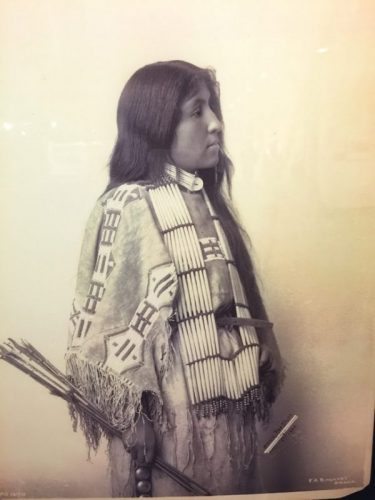
On this election year (Clinton-Trump 2016) the nastiest ever, at least in my history, with immigration being of particular controversy, the irony wasn’t lost on me that you didn’t have to be American to receive a land grant.
In fact, there were stories of immigrants who staked a claim the same day they arrived at the newly untied, United States of America. Talk about guts.
The Homestead Act became effective on the same day as the Emancipation Proclamation, January 1, 1863.
Solomon D. Butcher’s photographs capture pilgrims of the west in a fantastic collection at the newly-renovated Nebraska History Museum in Lincoln.
There are other gems at this museum of the westward expansion movement. During my visit sepia tone photos seared the brain with imagery of the sad yet stoic, majestic indigenous peoples of America, just as photography itself was reaching popularity.
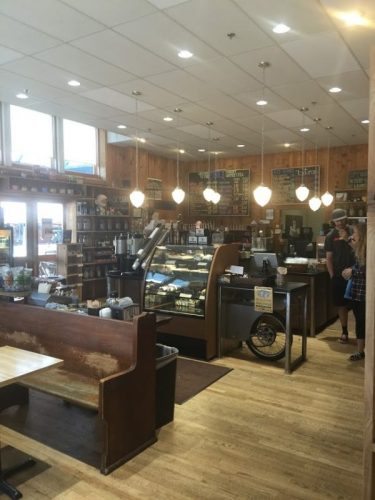
Through a quick and not terribly scholarly Google search, I find out that the Chrisman sisters did move out west with their parents to homestead an area on Lieban Creek in Custer County, near the Goheen settlement. They staked a claim on neighboring farms to their brothers.
The strategy was for the oldest sister to get her claim and then the next oldest and so on. They would live with one another to meet the requirement of inhabitance. Unfortunately, the adjoining claims were taken up before the youngest sister Ruth, far right, next to her horse called Jessie, could stake her claim.
Check Out Lincoln

If you’re on a westward expansion curiosity trip like I was, Lincoln is a great place to start. Home of the University of Nebraska, the Historic Haymarket downtown feels like a collegiate party scene for any age.
Walk the shops, art galleries, antique and book stores. From snug coffee boutiques to gourmet Olive Oil stores this reclaimed downtown warehouse district is pretty groovy!
The Homestead National Monument of America
Was Your Ancestor a Homesteader?
No Westward Ho history trip would be complete without a stop at The Homestead Monument in Beatrice, Nebraska.
The Beatrice Chamber of Commerce is revving up for the Solar Eclipse of 2017. On August 21 st, 2017 Beatrice will be cast into darkness in the middle of a Monday afternoon. The moon will line up with the sun for 2 minutes and 35 seconds. The Homestead National Monument of America invites you to a party to view and celebrate this celestial event.
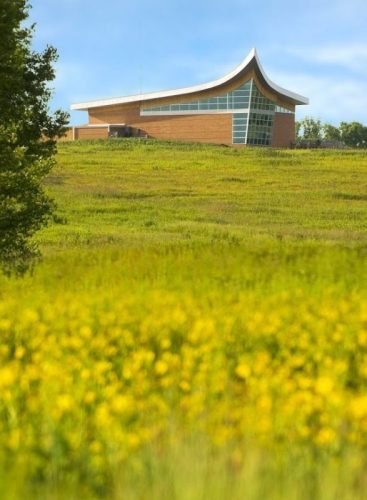
But you don’t need a Solar Eclipse to draw you to The Homestead Monument, a unit of the National Park Service. Consider these facts:
- 93 million people are descendants of homesteaders
- The Act was in effect for 123 year. The last settler staking his claim in Alaska in 1986.
- It was the single most significant expansion of our country, distributing 270 million acres of land.
The shape and design of the Homestead Monument is surprising. I was expecting a Laura Ingalls Wilder design aesthete, instead, it’s rather a mid- century modern.
Once you’re inside, you learn that it’s facing west and that the shape of the building is actually reflective of a plow. The way it is situated in the middle of a Nebraska prairie field, indeed on the site of one of the first homesteads in America, is fitting. It memorializes those long-ago gritty settlers and their life on the land.
Visiting The Homestead National Monument museum is visiting American history and while there you feel a part of this history. This is an American experience akin to the Fourth of July and apple pie but served up with reverence, yearning and nostalgia.
America Was Settled, By A Great Many Native Americans
Naturally, our country had its growing pains. Once any of us hears of our atrocious past with regard to the shameful treatment of our indigenous population, the age of westward expansion isn’t always celebratory. While visiting the Lewis & Clark Missouri River Visitor Center, I was floored to see just how many American Indian tribes there were… literally hundreds.
I was picturing a whole rural and unsettled west, I was wrong. It was “settled” and by a great many Native Americans. The Visitors Center has a gigantic map that you can literally walk on showing hundreds of Native American settlements. It also has a terrific array of interactive exhibits that put visitors in the “moccasins” of westward natives and explorers.

“As I looked about me I felt that the grass was the country, as the water is the sea. The red of the grass made all the great prairie the color of wine stains, or of certain seaweeds when they are first washed up.
And there was so much motion in it; the whole country seemed, somehow, to be running.” ― Willa Cather, My Ántonia
It’s said that a horse and rider could once disappear into the tall native prairie grasses of Nebraska. Tallgrass prairie restoration has been a part of the Homestead National Monument of America’s mission since 1939.
Walk the acreage surrounding The Monument and you’ll get a taste of what it might have been like. If you’re hankering for authenticity or to explore native prairie grass habitats, even more, check out Spring Creek Prairie Audubon Center in Denton, Nebraska.
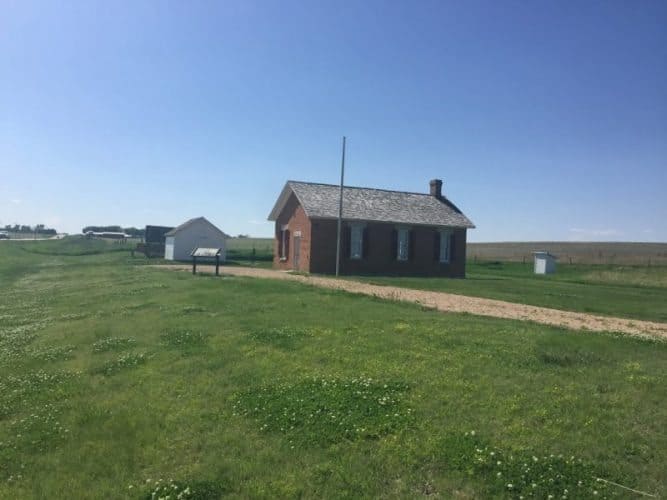
The Old School House
Visit the old schoolhouse at the Homestead National Monument, it’s much what you’d expect inside. However, strong May winds, nearly blowing me over as I approached this one-room shelter, made me wonder, how the heck did these prairie folk stand up to all four seasons of unpredictable and unreported weather?

After (or before) the Homestead National Monument of America, be sure to eat at the Black Crow Restaurant and Bar in Beatrice. The building is from the 1860s.
It was a biker bar. Chef and owner Ray Arter explained that as far as he knew the place has always been a bar, but behind the bar is a beautiful pharmaceutical counter and that appeared to be original to the building.
Chatting with Arter, I’m reminded of why one needs to talk to people when they travel. His story: He is a native of Philadelphia (complete with accent) and he became a chef by way of cooking and baking jobs in New York City (Andiamo’s) and Vail Colorado. He’s been running The Black Crow along with his wife for 23 years.
Arter started out at 16 cleaning pots and pans in a Philly bakery. One day he was asked to write a name on the birthday cake, doing a respectable job of this, he was asked, “Hey, do you want to learn any more about baking.” His answer, “Sure!” And then eventually, like so many before him, he moved west.

Consider This Country
So the next time you’re booking tickets to London, France or Italy to see ancient history, consider delving into your own history right here in the United States of America. Learn about our westward expansion, wagon trains, Lewis and Clark, Native Americans, and prairie living. Stake your claim on a trip to southeast Nebraska!
Nebraska Links
- Products That Passed the Stylist Flight Test - October 29, 2025
- Why Slovenia Should Be Your Next Food And Wine Destination - May 8, 2025
- Les Sables d’Olonne: A Slice of Paradise In Vendée, France - December 11, 2024








I was just in Lincoln, NE and had a blast. Your article inviting other travelers to visit Nebraska is spot on. I’m originally from Colorado and thought of Nebraska as “a redheaded ugly stepchild” for most of my life. I no longer think that way and have found through my latest trip and one that took me through the northwest corner of Nebraska 2 years ago there is much to see and do in this mostly flat state.